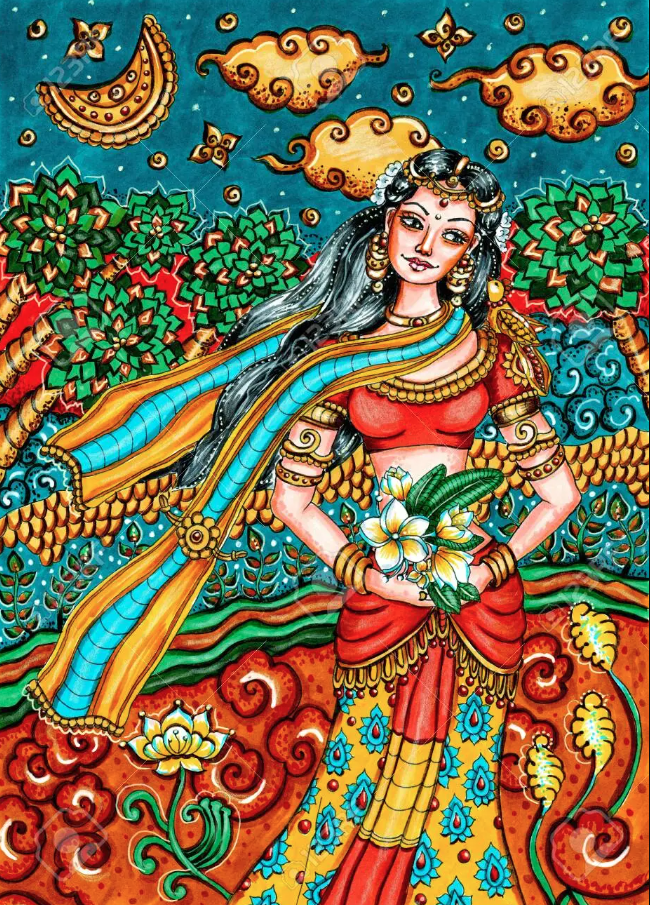Indian style painting
Indian Style Painting
Indian painting has a very long tradition and history in Indian art, though because of the climatic conditions very few early examples survive. The earliest Indian paintings were the rock paintings of prehistoric times, such as the petroglyphs found in places like the Bhimbetka rock shelters. Some of the Stone Age rock paintings found among the Bhimbetka rock shelters are approximately 10,000 years old.
India's ancient Hindu and Buddhist literature has many mentions of palaces and other buildings decorated with paintings (chitra),but the paintings of the Ajanta Caves are the most significant of the few ones which survive. Smaller scale painting in manuscripts was probably also practised in this period, though the earliest survivals are from the medieval period. A new style emerged in the Mughal era as a fusion of the Persian miniature with older Indian traditions, and from the 17th century its style was diffused across Indian princely courts of all religions, each developing a local style. Company paintings were made for British clients under the British raj, which from the 19th century also introduced art schools along Western lines. This led to modern Indian painting, which is increasingly returning to its Indian roots.
Performance of Patua Sangeet by a Patua, with a pattachitra scroll to illustrate, Kolkata
Indian paintings can be broadly classified as murals, miniatures and paintings on cloth. Murals are large works executed on the walls of solid structures, as in the Ajanta Caves and the Kailashnath temple. Miniature paintings are executed on a very small scale for books or albums on perishable material such as paper and cloth. Traces of murals, in fresco-like techniques, survive in a number of sites with Indian rock-cut architecture, going back at least 2,000 years, but the 1st and 5th-century remains at the Ajanta Caves are much the most significant.
Paintings on cloth were often produced in a more popular context, often as folk art, used for example by travelling reciters of epic poetry, such as the Bhopas of Rajasthan and Chitrakathi elsewhere, and bought as souvenirs of pilgrimages. Very few survivals are older than about 200 years, but it is clear the traditions are much older. Some regional traditions are still producing works.
Read more...

